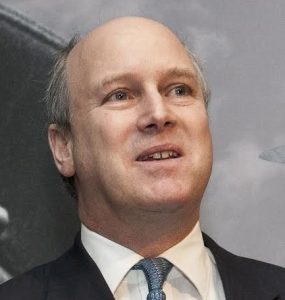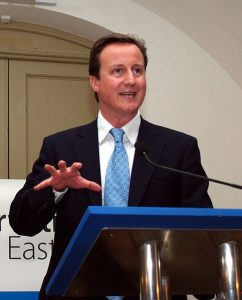
Finest Hour 167
Books, Arts & Curiosities – Quietness and Peace: Churchill’s Grave

Winston Churchill, Parliament Square, London © Sue Lowry & Magellan PR
August 2, 2015
Finest Hour 167, Special Issue 2015
Page 25
By ROBERT COURTS
With Richard Dimbleby’s peerless commentary on the State Funeral of Sir Winston Churchill ringing in our ears, reporter William Crawley conducts us on a radio tour that starts in London and leads to Bladon, where he explores the simple setting of Churchill’s grave.
After a symbolic railway journey, we arrive at the station of Hanborough and are picked up by local taxi driver Nicky, who points out that some visitors to close-by Blenheim Palace do not even realise that Churchill is buried so near. Arriving at the Parish Church of St. Martin’s, Churchwarden Mollie Hance notes how Churchill lies with his family next to his father, mother and brother, as “all of us would like to rest.” John Anson, who lives just outside the graveyard, explains how the villagers feel that they are the protectors of an important local tradition.

2024 International Churchill Conference
No one is more aware of this than the Rector, Canon Adrian Daffern, who guides the listener through the simple and peaceful Church and sees the people who come inside to reflect. Their names fill the visitors book. People travel not only from Britain but from Winnipeg, Detroit, Oklahoma, Kansas, California, and Alabama.
Daffern points out that villagers at the time of the burial downplayed their famous charge for fear of being overwhelmed. The graveside remains a place to be discovered by those who really wish to come. As a result the village has changed so little that visitors will sometimes ask, “Is that really THE Winston Churchill?”
This continuity of scene is underlined by a visit with John Forster, the archivist at Blenheim Palace, Churchill’s birthplace, which provides a ducal counterpoint to the simplicity of Bladon. Forster reads Churchill’s own words from 1895, on visiting his father’s grave:
“The service in the little Church was going on, and the voices of the children added to the beauty and restfulness of the spot. The hot sun of the last few days has dried up the grass a little—but the rose bushes are in full bloom and make the churchyard very bright. I was so struck by the sense of quietness and peace, as well as by the old world air of the place— that my sadness was not unmixed with solace. It is the spot of all the others he would have chosen.”
As it was then, so it is now.
Crawley observes that the grave is “inconspicuous, quiet, understated”—everything Sir Winston Churchill was not. Long-distance visitors are not merely tourists but participants in a commemoration initiated five decades ago with a slow funeral march in London.
Of Churchill, Crawley concludes, “he is buried not amongst kings, but with his family, not in splendid isolation, but sharing a grave with the woman he loved, the commoner with a common touch was not in the end just ‘a Great Man,’ he was also—a man.”
Churchill’s Grave can be found on BBC iPlayer at bbc.co.uk/programmes/b04yjv7j, which is part of the Churchill season at bbc.co.uk/programmes/p02gx4g5
Robert Courts is a barrister living within sight of Churchill’s grave. He is a committee member of The Churchill Centre (UK) and sits on the Parochial Church Council of St Martin’s.
Subscribe
WANT MORE?
Get the Churchill Bulletin delivered to your inbox once a month.




